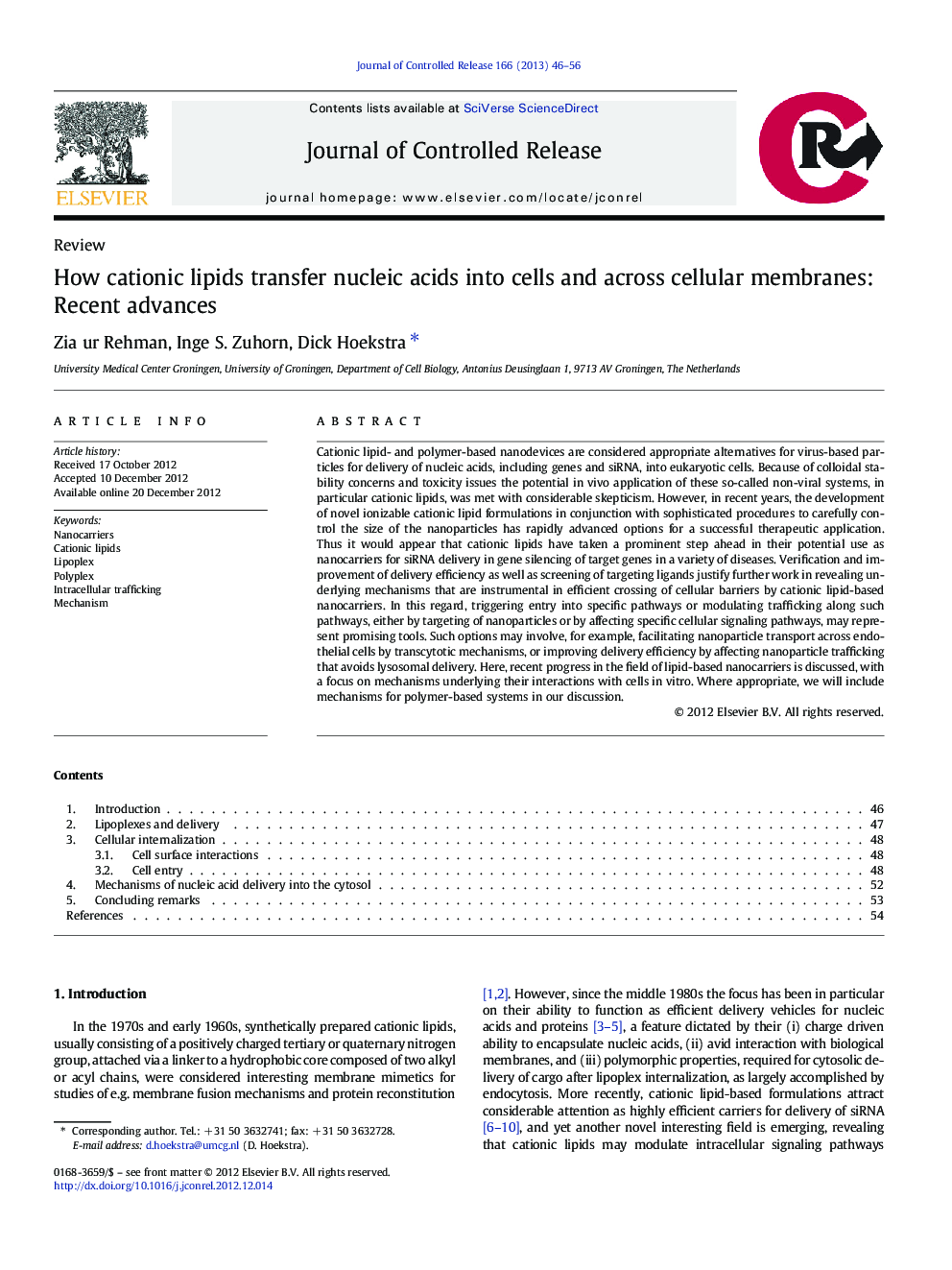| کد مقاله | کد نشریه | سال انتشار | مقاله انگلیسی | نسخه تمام متن |
|---|---|---|---|---|
| 1424241 | 986707 | 2013 | 11 صفحه PDF | دانلود رایگان |

Cationic lipid- and polymer-based nanodevices are considered appropriate alternatives for virus-based particles for delivery of nucleic acids, including genes and siRNA, into eukaryotic cells. Because of colloidal stability concerns and toxicity issues the potential in vivo application of these so-called non-viral systems, in particular cationic lipids, was met with considerable skepticism. However, in recent years, the development of novel ionizable cationic lipid formulations in conjunction with sophisticated procedures to carefully control the size of the nanoparticles has rapidly advanced options for a successful therapeutic application. Thus it would appear that cationic lipids have taken a prominent step ahead in their potential use as nanocarriers for siRNA delivery in gene silencing of target genes in a variety of diseases. Verification and improvement of delivery efficiency as well as screening of targeting ligands justify further work in revealing underlying mechanisms that are instrumental in efficient crossing of cellular barriers by cationic lipid-based nanocarriers. In this regard, triggering entry into specific pathways or modulating trafficking along such pathways, either by targeting of nanoparticles or by affecting specific cellular signaling pathways, may represent promising tools. Such options may involve, for example, facilitating nanoparticle transport across endothelial cells by transcytotic mechanisms, or improving delivery efficiency by affecting nanoparticle trafficking that avoids lysosomal delivery. Here, recent progress in the field of lipid-based nanocarriers is discussed, with a focus on mechanisms underlying their interactions with cells in vitro. Where appropriate, we will include mechanisms for polymer-based systems in our discussion.
Figure optionsDownload high-quality image (52 K)Download as PowerPoint slide
Journal: Journal of Controlled Release - Volume 166, Issue 1, 28 February 2013, Pages 46–56